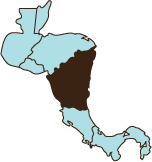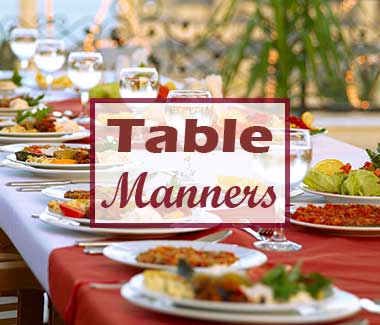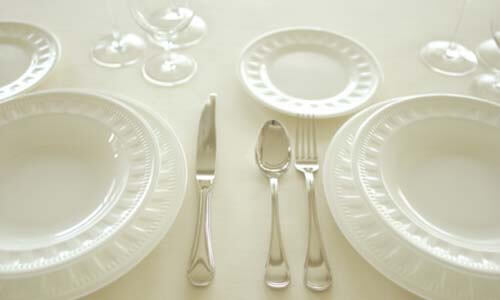Nicaragua Dining Etiquette
Dining etiquette in Nicaragua is similar to the rules of dining etiquette in Mexico and Guatemala. The dining etiquette information below presents Nicaraguan variations from general dining etiquette of Latin America as found on the Mexican dining etiquette page.
Dining etiquette for toasting. The most common toast is salud (to your health).
Dining etiquette for beginning to eat. Do not begin eating until the host says, "Buen provecho!''
Dining etiquette for using utensils. Nicaraguans dine both U.S. style (switching the knife and fork) and European style (keeping the knife in the right hand and the fork in the left throughout the entire meal).
Dining etiquette for signaling to the waiter. When the meal is finished, the knife and fork are laid parallel to each other across the right side of the plate. If you put both utensils down on the plate for any real length of time, it is a sign to the wait staff that you are finished, and your plate may be taken away from you. Alternately, if you lay your cutlery down on either side of the plate it means you haven't finished; but if you really are, the host might interpret this as a sign that you were not happy with the meal.
Dining etiquette for using the correct utensil The fork and spoon above your plate are for dessert. There are often many additional pieces of cutlery at a formal meal; if you're unsure of which utensil to use, always start from the outside and work your way in, course by course.
Dining etiquette for eating bread. Bread, if replacing tortillas (rarely will there be bread and tortillas), is sometimes served without butter; in that case, there usually will not be a butter knife, nor will there be a bread dish; your bread is placed on the rim of your main plate or on the table by your plate. Remember, if tortillas are served, they can be used to scoop up bits of food on your plate.
Dining etiquette for using your hands. When not holding utensils, your hands are expected to be visible above the table: this means you do not keep them in your lap; instead, rest your wrists on top of the table (never your elbows).
Dining etiquette for passing food. At the table, pass all dishes to your left.
Dining etiquette for seating. The most honored position is at the head of the table, with the most important guest seated immediately to the right of the host (women to the right of the host, and men to the right of the hostess). If there is a hosting couple, one will be at each end of the table. In the European tradition, men and women are seated next to one another, and couples are often broken up and seated next to people they may not have previously known. This is done to promote conversation. Men typically rise when women enter the room, and continue to hold doors for women and allow them to enter a room first.
Dining etiquette for eating. Eat everything on your plate. It is a compliment if you ask for seconds, so be sure, when being served family style, to take small portions so that you can eat everything on your plate and still ask for seconds.
Dining etiquette for eating in a restaurant. In informal restaurants, you may be required to share a table. Wait staff may be summoned by making eye contact; waving or calling their names is very impolite (although you might see some Nicaraguans make a kind of pssst sound; don't do it).
Dining for discussing business. The business breakfast and lunch are more common in Nicaragua than the business dinner; dinner is usually saved for family. The business meal, however, is generally not the time to make business decisions. Take your cue from your Nicaraguan associates: if they bring up business, then it's okay to discuss it (more often than not, over the coffee at the end of the meal), but wait to take your lead from their conversation.
Dining etiquette for eating in a home. When you arrive at a Nicaraguan associate's home for a formal meal, you will be instructed on where to sit, and there you should remain. Once you (and the group) are invited to another room, most probably the dining room, be sure to allow more senior members of your party to enter the room ahead of you: men should move aside to allow women to enter the room ahead of them.
Dining etiquette for paying the bill. Usually the one who does the inviting pays the bill, although the guest is expected to make an effort to pay.
Dining etiquette for tipping. A 10 percent tip is usually sufficient in restaurants.




